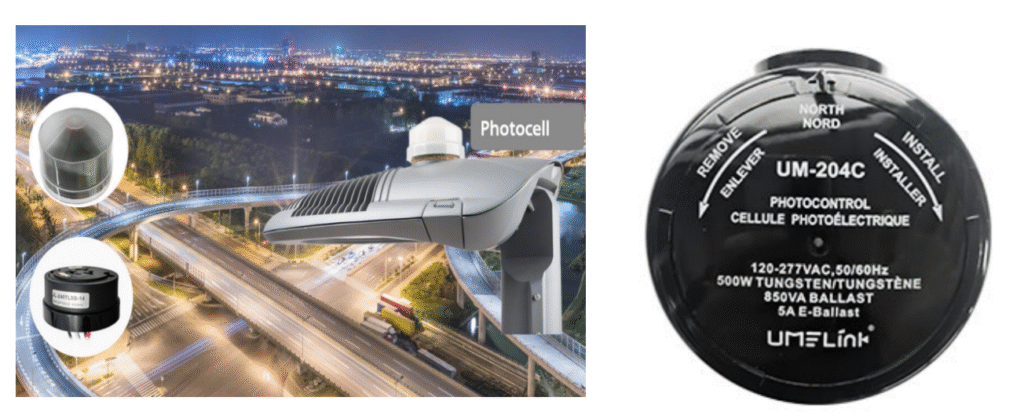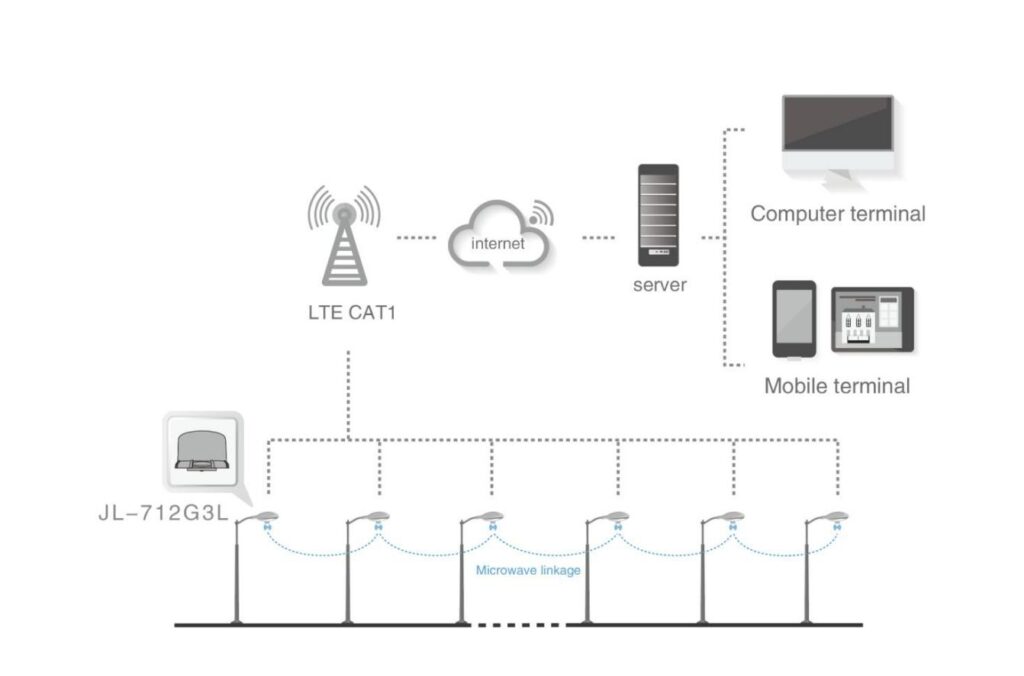Outline
- Introduction
- Technology Integration and Application
- Integrated Zhaga Interfaces
- Wireless Communication Technologies
- Data Management Software
- Intelligence Level
- Energy Conservation and Environmental Impact
- Policy and Investment
- Road Lighting Acceptance Standards
- Illuminance
- Color Temperature
- Glare Control
- Energy Efficiency
- Mainstream Control Systems
- CityTouch by Signify
- IntelliLight by Flashnet
- Tvilight’s CitySense
- Telematics Wireless T-Light
- Telensa PLANet
- GE’s LightGrid
- Schréder EXEDRA
- Cimcon Lighting
- Final Words
Human quest for technology is perennial and cities across the United States are an excellent manifestation of this. Striving to become smarter and more energy-efficient, adopting advanced streetlight control systems is at the forefront of this transformation.
Those state-of-the-art technologies are not only enhancing city aesthetics but also dialing down energy usage and environmental effects. By integrating intelligent controls, wireless communication, and data management, modern streetlight systems are revolutionizing the way we illuminate public spaces.
This article explores the latest innovations and standards shaping the future of US smart streetlight control systems, highlighting their significance in creating sustainable, safe, and connected urban environments.

Technology Integration and Application
In modern smart streetlight systems, the seamless integration of advanced technologies is key to optimizing performance, energy efficiency, and urban management. This section provides an overview of the core technologies that drive these systems: Zhaga interfaces, wireless communication, and data management software.
Integrated Zhaga Interfaces
Zhaga interfaces have become a standard in photocell street lights, providing a universal platform for connecting sensors, controllers, and other devices. These standardized sockets ensure compatibility across different manufacturers and simplify the upgrade process. Zhaga interfaces allow for easy plug-and-play installation of smart nodes, enabling cities to deploy and manage intelligent streetlighting solutions with greater flexibility and scalability.
Wireless Communication Technologies
wireless communication, which is vital for Smart streetlight systems as it offers real-time monitoring, control, and information exchange.
While there are various technologies available that can serve the purpose, LoRa, NB-IoT, and Zigbee are recommended. These technologies have low energy requirements, long-range capabilities, and secure data transfer features.
Such protocols enable remote management of outdoor photocell light sensors that allow operators to adjust light levels, identify faults, and optimize power usage with minimum manual involvement.
Data Management Software
Data management software is an essential component of smart streetlighting operations. Firstly, the information about energy consumption, maintenance needs, and the system’s overall performance is gathered by employing sensors or other connected devices.
This data collected is then analyzed to make data-driven decisions that ultimately enhance efficiency, reduce costs, and improve public safety.

Intelligence Level
Automatic dimming capabilities are a hallmark of intelligent streetlight systems in the US. They enable lights to adjust their brightness based on environmental conditions and real-time data. With the help of sensors and advanced algorithms, these systems detect ambient light levels, traffic flow as well as pedestrian presence thus conveniently dimming and brightening lights.
In doing so, about 50% energy savings can be accrued while at the same time minimizing operation time for LED fixtures which in turn prolongs their lifespan.
On top of that, automatic dimming reduces light pollution and enhances urban lighting quality thus ensuring safety and visibility during rush hours. This intelligent approach to lighting control is a key factor in the energy efficiency and sustainability of modern smart streetlight systems.
Energy Conservation and Environmental Impact
For reducing the carbon footprint of urban infrastructure, the adoption of LED lighting and renewable energy sources is critical. One prominent example in the US in this regard of Los Angeles, where nearly all streetlights have been upgraded to LED. This change has led to a 64% reduction in energy consumption and a decrease in carbon emissions by 67,000 metric tons annually.
These photocontrols, often integrated with solar panels or wind energy, exemplify how cities can drastically cut electricity usage while promoting sustainability. By investing in such technologies, municipalities not only reduce operational costs but also contribute significantly to global environmental goals.
Policy and Investment
In the smart streetlighting transformation in the U.S., policies and investments are the linchpin of the revolution. Federal and local governments have noticed that smart lighting systems reduce energy consumption, increase safety levels and help in modernizing urban structures.
For instance, the U.S. Department of Energy has initiated various programs to promote energy-efficient lighting This offers grants and technical help for cities that are planning for smart streetlight technology. Furthermore, it is necessary to mention that such projects would not be possible without private funding. For instance, Siemens provides tailored financial solutions that enable them to implement smart lighting systems despite budget limitations.
These investments are essential in extending smart city plans nationwide by providing capital and technical skills for advanced lighting systems development matching current efficiency as well as sustainability standards.
Road Lighting Acceptance Standards
To ensure safety and efficiency, smart streetlighting systems must adhere to specific standards outlined in the “Road Lighting Manual.” These standards encompass several critical aspects:
Illuminance
Illuminance levels are crucial for providing adequate visibility on roadways. The manual specifies minimum and maximum lux levels depending on road type and traffic volume, ensuring that streets are sufficiently lit without wasting energy.
Color Temperature
Color temperature directly impacts visuality both for drivers and pedestrians. The recommended range lies between 3000K to 4000K. This range strikes the perfect balance between clarity while avoiding too strong or unnatural lighting, which can cause discomfort or distraction.
Glare Control
Effective glare control minimizes visual discomfort and increases safety. Therefore, the manual lays out requirements for shielding and directing light, in particular residential and high-traffic areas, to minimize glare. This helps in ensuring that light goes to the exact place it is needed without much brightness which can impair vision.
Energy Efficiency
Energy efficiency is a core focus of the standards, promoting the use of LED technology and photocell sensors to reduce energy consumption. The manual encourages the integration of dimming capabilities and adaptive lighting, which adjust brightness based on real-time conditions, further enhancing energy savings.
Mainstream Control Systems
Smart streetlight control systems are essential for managing urban lighting networks efficiently. Below are eight popular smart streetlight control systems widely used in the U.S., each with unique features:

CityTouch by Signify
CityTouch offers a cloud-based platform for remote management of streetlights. It provides real-time data on energy usage, maintenance needs, and lighting performance. Its adaptive lighting feature allows automatic dimming based on traffic conditions, enhancing energy efficiency.
IntelliLight by Flashnet
IntelliLight is known for its robust wireless communication capabilities using LoRaWAN technology. It enables real-time control and monitoring of streetlights, offering detailed analytics and fault detection to minimize maintenance costs.
Tvilight’s CitySense
Tvilight’s CitySense system uses motion sensors to detect pedestrian and vehicle presence, adjusting lighting levels accordingly. This dynamic dimming not only saves energy but also enhances safety in urban areas.
Telematics Wireless T-Light
T-Light is a flexible system compatible with various communication protocols like Zigbee and NB-IoT. It offers centralized management, fault detection, and energy reporting, making it ideal for large-scale deployments in smart cities.
Telensa PLANet
PLANet is a low-power, wide-area network (LPWAN) system designed for large urban lighting networks. It provides precise control and monitoring of each streetlight, enabling cities to optimize energy use and reduce carbon emissions.
GE’s LightGrid
GE’s LightGrid uses GPS technology to provide location-based control of streetlights. It offers real-time energy usage data and allows cities to create custom lighting schedules, improving both efficiency and safety.
Schréder EXEDRA
Schréder EXEDRA is an open, interoperable platform featuring advanced lighting control, such as adaptive dimming and fault detection. This integrates with various sensors and devices to improve energy efficiency and reduce maintenance efforts.
Cimcon Lighting
Cimcon’s system operates leveraging IoT technology. It provides remote monitoring and control of streetlights, as well as advanced analytics for predictive maintenance. Further, it integrates seamlessly with existing city infrastructure, making it a versatile choice for smart city projects.
Final Words
The integration of cutting-edge technologies and adherence to strict standards are driving the evolution of smart streetlighting systems in the US, making urban environments safer and more energy-efficient. For cities looking to implement these advanced systems, Chi-Swear offers reliable smart lighting solutions, including photocells, to ensure robust and efficient performance. Explore Chi-Swear’s range of products to elevate your city’s lighting infrastructure.






